Pan-viral ORFs discovery using massively parallel ribosome profiling
- PMID: 40504907
- PMCID: PMC12459998
- DOI: 10.1126/science.ado6670
Pan-viral ORFs discovery using massively parallel ribosome profiling
Abstract
Defining viral proteomes is crucial to understanding viral life cycles and immune recognition but the landscape of translated regions remains unknown for most viruses. We have developed massively parallel ribosome profiling (MPRP) to determine open reading frames (ORFs) across tens of thousands of designed oligonucleotides. MPRP identified 4208 unannotated ORFs in 679 human-associated viral genomes. We found viral peptides originating from detected noncanonical ORFs presented on class-I human leukocyte antigen in infected cells and hundreds of upstream ORFs that likely modulate translation initiation of viral proteins. The discovery of viral ORFs across a wide range of viral families-including highly pathogenic viruses-expands the repertoire of vaccine targets and reveals potential cis-regulatory sequences.
Conflict of interest statement
Figures
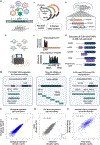
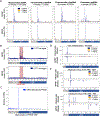
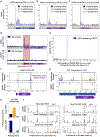
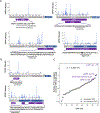
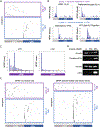
Update of
-
Pan-viral ORFs discovery using Massively Parallel Ribosome Profiling.bioRxiv [Preprint]. 2023 Sep 28:2023.09.26.559641. doi: 10.1101/2023.09.26.559641. bioRxiv. 2023. Update in: Science. 2025 Jun 12;388(6752):1218-1224. doi: 10.1126/science.ado6670. PMID: 37808651 Free PMC article. Updated. Preprint.
References
-
- Bansal A, Carlson J, Yan J, Akinsiku OT, Schaefer M, Sabbaj S, Bet A, Levy DN, Heath S, Tang J, Kaslow RA, Walker BD, Ndung’u T, Goulder PJ, Heckerman D, Hunter E, Goepfert PA, CD8 T cell response and evolutionary pressure to HIV-1 cryptic epitopes derived from antisense transcription. J. Exp. Med. 207, 51–59 (2010). - PMC - PubMed
MeSH terms
Substances
Grants and funding
LinkOut - more resources
Full Text Sources

